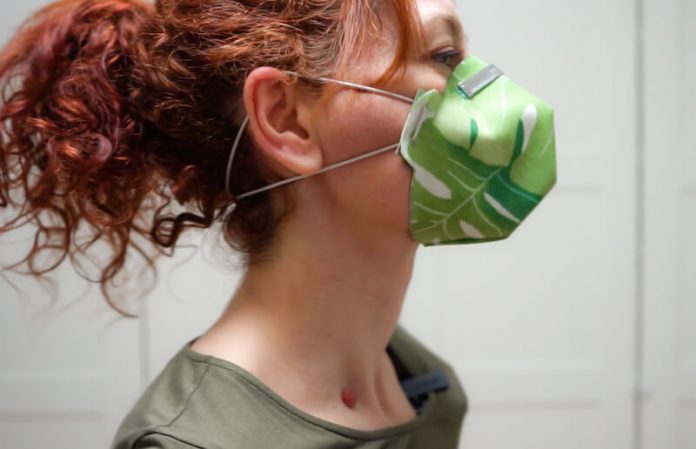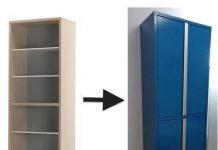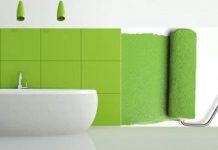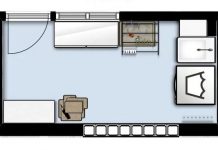
With this video tutorial you will learn how to make a homemade mask without sewing. Download the free pattern and follow the step by step to have your own mask in a few minutes. Also, don’t miss the following practical guide with everything you need to know about respiratory protection masks.
Due to the shortage of masks that currently exists, we have no choice but to use homemade masks to protect our nose and mouth and reduce the risk of contracting viruses such as the new coronavirus COVID-19.
In the following video tutorial you will be able to see the whole step by step, as well as some recommendations and the materials that you must use to make your own mask:
Vertical mask pattern
Depending on their design, mask models The most common that can be found on the market are:
- Surgical masks: their shape is rectangular and they are designed to filter the particles emitted by the wearer of the mask during breathing, preventing them from reaching the outside.
- High-efficiency FFP masks: their shape can be conical, horizontal (duck-bill) and vertical. They are designed to prevent the user from breathing in liquid particles and aerosols present in the environment.
On the other hand, the masks can have a valve that prevents condensation. This feature is interesting when it is going to be worn for many hours, however, people with infectious respiratory processes should not wear it.
For this tutorial we have made a upright face mask for adults, whose pattern can be downloaded by clicking on the following link:
DOWNLOAD ADULT VERTICAL MASK PATTERN

You can also download the pattern for children of the mask or face mask (based on the recommendations of the Spanish Association for Standardization:
DOWNLOAD CHILDREN’S VERTICAL MASK PATTERN

What are self-filtering respiratory protection masks?
The self-filtering masks They protect the respiratory system from the inhalation of dust, smoke and aerosols. According to the European standard EN 149, masks are classified into three types depending on their protection factor (FFP):
- FFP1: they have a minimum filtration efficiency of 78%. It protects against non-toxic waste such as and is used for some sanding jobs (metals, cement, stone), demolition, pollen, animal handling and feeding, etc.
- FFP2: they have a minimum filtration efficiency of 92%. They are used for activities with low toxicity particles such as: woodworking, agriculture, mining, construction, waste collection, laboratories, etc.
- FFP3: They have a minimum filtration efficiency of 98% and filter poisonous, oncogenic and radioactive particles. They are used in activities that require painting with solvent-based paint, wood treatments, application of insulation, cleaning and disinfection, etc.
What type of mask is most suitable when there is a biological risk?
According to the Donostia University Hospital guide, if there is a biological risk, it is recommended to use FFP2 or FFP3 self-filtering masks when aerial isolation of the wearer of the mask is required, since they are made with plastic fibers that retain contaminating elements.
On the other hand, surgical masks can be used as a standard precaution to prevent bacteria or viruses from being transmitted by the wearer to other people around us.

How should the mask be put on?
The World Health Organization advises the following steps when putting on the mask correctly:
- Wash your hands with an alcohol-based sanitizer or soap and water.
- Cover the mouth and nose with the mask, making sure there are no gaps or spaces between the face and the mask.
- Avoid touching the mask while wearing it or wash your hands if you do.
- Remove the mask from behind (by the rubber part) and wash your hands with an alcohol-based disinfectant or with soap and water.
How long does a mask last?
Normally, the manufacturer establishes the expiration date of a mask and whether or not it is for single use. In the case of control of respiratory diseases and their airborne transmission, the FFP2 and FFP3 self-filtering masks must be discarded after use, although the Procedures Manual of the Spanish Society of Pulmonology and Thoracic Surgery (SEPAR) indicates that they can be reused by the same person, as long as they are disinfected with a product that does not deteriorate them.
In any case, the validity time of the FFP2 masks must be limited to a maximum of five days.
Are cloth masks effective against COVID-19?
Although homemade masks are not recommended for the health field, they help minimize the risk of contracting COVID-19. According to Beatriz Novoa, director of the Immunology and Genomics group at the Vigo Marine Research Institute, they do not completely protect against the coronavirus, but they contribute to putting up barriers.
Taking into account that viruses are usually in tiny droplets of saliva that can come out when you cough or sneeze, it is recommended that masks be made with fabrics that are hydrophobic or repel water. In this sense, the fabrics that are commonly used for stain-resistant tablecloths can be good candidates for making our homemade masks, since they repel liquids. In addition, they can be disinfected with cleaners that contain bleach without deteriorating.

In short, less is nothing and in any case, homemade masks serve to prevent the spread of the virus and protect other people. For this reason I hope you will be encouraged when it comes to make your own homemade mask without sewing. I already have mine and I have also made several for my relatives.
You can find many more guides and tricks on DIY and decoration at
[elfsight_youtube_gallery id=»1″]



